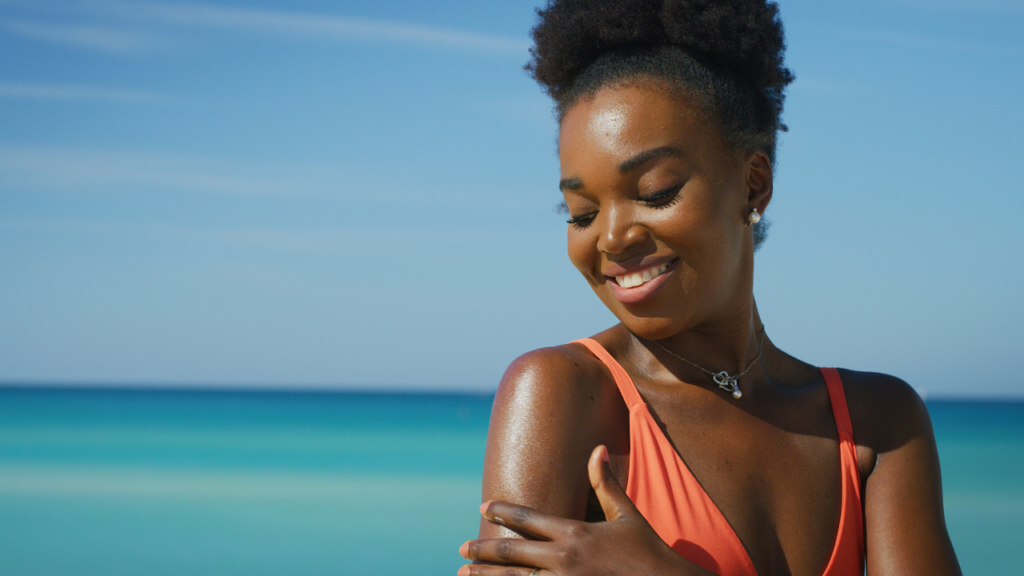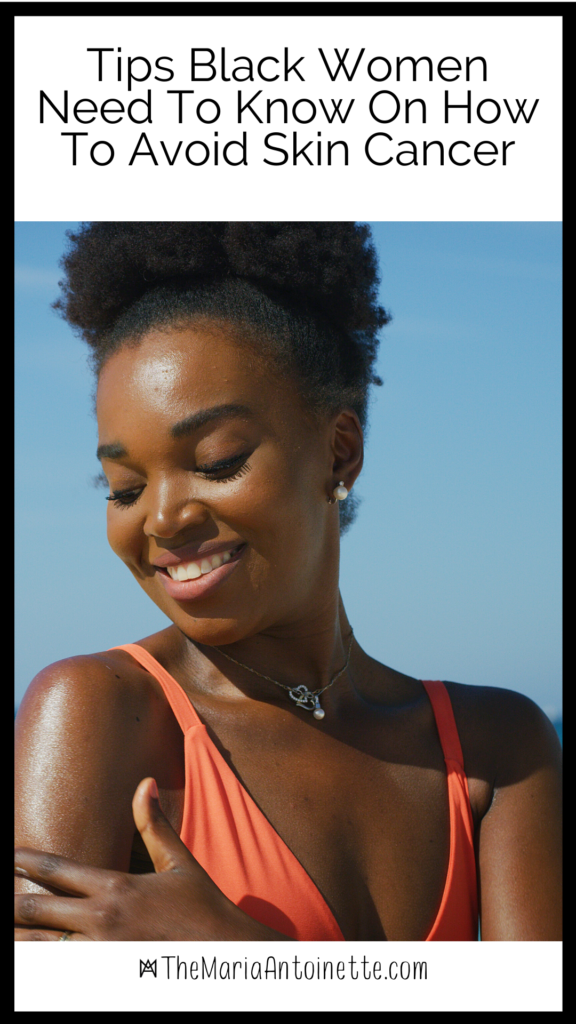If you live in areas where the sun’s rays are the strongest or you spend a lot of time outdoors, especially in the summer, then you need to be even more cautious of sunbathing risks. Although sunbathing is a popular summertime activity, if you overdo it, you can place your health in danger of contracting skin cancer.
According to the American Academy of Dermatology Association, “one in five Americans will develop skin cancer in their lifetime. Approximately 9,500 people in the U.S. are diagnosed with skin cancer every day”. How does this affect Black people? According to 2017 data from The American Cancer Society, it indicated there was a five-year melanoma survival rate of 93% for Caucasians, but only 69% for Black people. This means important steps need to be taken to help Black people avoid skin cancer.
Types of Skin Cancers
Basal Cell Carcinoma – is the most common form of skin cancer. According to the Skin Cancer Foundation, “in the U.S. alone, more than 4 million cases are diagnosed each year.” Because BCC grows slowly it means that most are curable and cause little damage when diagnosed and treated early.
Squamous Cell Carcinoma – The second most common form of skin cancer that is caused by an uncontrolled growth of abnormal squamous cells which is are the thin, flat cells that make up the epidermis, or the outermost layer of the skin.
Melanoma – Is the most dangerous form of skin cancer as it can be fatal. What makes the more dangerous of the three is because melanoma can spread to other organs if it’s not caught and treated.
For the purpose of this post, I will specifically speak about Melanoma.
Spotting Signs of Skin Cancer
The most common red flag is your skin’s appearance. For example, note any new growths or sores that won’t heal. If you spot something that looks abnormal use the “ABCDE rule”. The American Cancer Society breaks it down as:
Asymmetry – One part of a mole or birthmark doesn’t match the other.
Border – The edges are irregular, ragged, notched, or blurred.
Color – The color is not the same all over and may include shades of brown or black, sometimes with patches of pink, red, white, or blue.
Diameter – The spot is larger than ¼ inch across – about the size of a pencil eraser – although melanomas can sometimes be smaller than this.
Evolving – The mole is changing in size, shape, or color.
Although you may have a mole that fits the description of melanoma, it could be non-cancerous (benign). However, you still need to get it checked out to be safe. By doing a skin biopsy, your doctor can determine if a mole is cancerous or benign.
Causes of Melanoma
Most people develop melanoma because of an overexposure to ultraviolet radiation from the sun. This harms the DNA of melanocytes and if genetic damage occurs, proper growth and cell division are hindered. Although the cells don’t die, they continue to grow and spread and can even become cancerous, resulting in melanoma. There is also familial malignant melanoma. This is an inherited condition in which two or more close relatives, such as a parent or sibling have melanoma making it possible for it to be passed down genetically. You can read more about familial malignant melanoma here.
How to Protect Your Skin While Out In the Sun
Always use sunscreens with a sun protection factor (SPF) of 30 or more even on cloudy days. Did you know you can get some of your worse sunburns when it’s cloudy? Although there are clouds in the sky, that doesn’t stop UV rays from piercing down to the ground. This even goes for the wintertime. SPF should be apart of your year-round skincare routine.
Choose bathing suits with a special weave that helps block ultraviolet radiation. Check out these SPF suits for your next beach outing.
Don’t stay out in the sun long. As soon as you feel you’re starting to burn, get out of the sun and seek shade.
Stay out of the tanning beds. There is no such thing as “healthy” or “safe” tanning. Tanning beds will damage your skin cells and age you prematurely. They can also lead to cancer which is what you want to avoid.
Some studies advise higher levels of vitamin D, as a way to safeguard against cancer in general. However, you still have to stay out of the sun as over-sunbathing can decrease vitamin D levels. Foods rich in vitamin D include salmon and cod liver oil.
Now that you’re armed with ways on how to avoid skin cancer you can take the necessary steps to protect yourself and your family while you enjoy fun in the sun.
Latest posts by Maria Antoinette (see all)
- 10 Romantic Date Night Ideas For Any Time of The Year - January 26, 2023
- Tips To Help You Reconnect With What Brings You Joy - January 19, 2023
- Planning A Road Trip? Here Are Some Key Tips You Should Know - January 12, 2023




